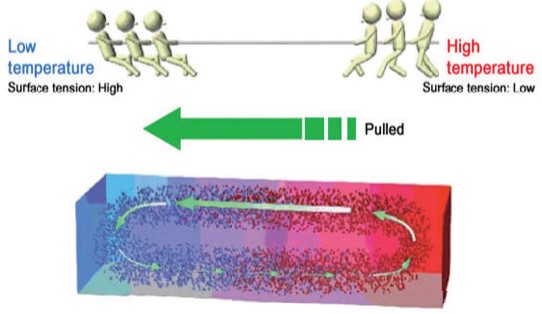CLOSE
About Elements
TANAKA is a leading company in the field of precious metals.
Advanced materials and solutions that support societal progress, the development stories behind them, the voices of engineers, and our management philosophy and vision—
Elements is an online media platform that shares insights that lead to a better society and a more prosperous future for the planet under the slogan “Mastering Precious Metals.”

Tears of Wine and Palladium-coated Copper Wire: The Marangoni Effect

Semiconductor Digest March 2024
DODGIE CALPITO and YUMI SHIMADA, Tanaka Kikinzoku International (America),
Inc. TAKESHI KUWAHARA, Tanaka Denshi Kogyo K.K. (Japan)
Mixing of palladium and copper within conventional palladium-coated copper wires is explained by the Marangoni effect. Proprietary dopants can counter this effect.
TEARS OF WINE ARE THE CLEAR LIQUID
rising and eventually falling inside of a glass filled with wine as shown in FIGURE 1. This is caused by water flowing away from evaporating alcohol because of differences in their surface tension. Water, with a higher surface tension, climbs up the glass wall by capillary action away from the alcohol-water mixture in wine. This is known as the Marangoni Effect named after physicist Carlo Giuseppe Matteo Marangoni who studied the reaction of oil on water in the 1860s. An illustration of this effect on mixed materials at the application of heat is shown in FIGURE 2.
In thermosonic wire bonding, the most common method of interconnecting semiconductors, the Marangoni Effect is hypothesized to be the mechanism in the creation of the Free-Air Ball (FAB). The FAB is the spherical end of the wire molten by electric discharge that is then pressed and ultrasonically welded to the device to make the first bond of the interconnection.


Source : https://iss.jaxa.jp/kiboexp/theme/first/marangoni/haikei.html
![]()










